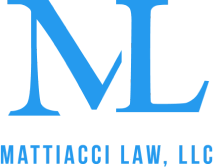What Evidence Do I Need to Win a Personal Injury Settlement in Philadelphia?

You need as much evidence as possible. Evidence of who is at fault is central because juries decide awards based on who they believe caused the accident. They also adjust the size of the award based on a concept called comparative negligence. The stronger your case is that you have 0% liability, the higher your settlement.
Even if you bear substantial responsibility, you are entitled to an award, provided the court finds your share of the blame below 51%. Strong evidence that mitigates your level of responsibility will force the other side to settle for more.
For example, imagine you had a $100,000 claim for your wrecked vehicle, injuries, and lost income. If you are found 10% at fault, your award equals $90,000; however, if your evidence is weaker, you could be found 70% at fault, reducing your award to $70,000.
Additionally, you need evidence that justifies your damages. If not, the opposing attorneys may argue your claim is inflated and try to avoid paying a portion of your expenses.
While any evidence supporting your claims can be valuable, certain types of evidence are essential.
Here are some critical pieces of evidence to win a personal injury settlement in Philadelphia.
Police Reports
Often, police reports serve as a key starting point in constructing your case. They provide needed details and verify where the accident occurred. For instance, if you slip and fall and call the paramedics, the police also come, and the subsequent report becomes available as evidence.
Traffic accidents of any seriousness require a police response and subsequent report. These reports often contain valuable information, including a finding of fault and the accompanying citations, if applicable.
Police reports are easy to access because they are classified as public. For example, if the police respond to a car accident, each involved driver receives a copy. In cases where multiple agencies respond, they each issue a report to the involved drivers.
For serious accidents, accident reconstruction specialists will issue their own reports. These provide essential evidence but may not be conclusive.
Witness Statements
Witness statements memorialize their view of what happened. If they saw the injury occur, they can be invaluable. They can effectively back up your case.
In addition, since many witnesses have impartiality, courts give their testimony increased weight. Therefore, obtaining the witness statements may be vital to winning your claim. Often, defendants will try to justify a low-ball settlement claiming that what happened comes down to their word against yours. A witness statement backing up your side of the story can make all the difference.
Victim Statements
The victim statement memorializes your version of events. It allows you to explain how you were injured and who caused the injury. If police respond, you’ll have a chance to make a statement immediately; if you give no immediate statement, it’s always wise to write down your version of events while the memory remains fresh.
Your statement is vital for building your narrative of the case. For example, in a car accident, your statement may detail how the other driver swerved into your lane, leading to the accident. In addition, the details of your statement prepare your attorneys for when the other side attempts to pin blame unfairly on you.
Medical Reports
Police reports, witness statements, and victim accounts all help answer the questions of where, when, and why. The medical reports demonstrate the aftermath.
Your medical reports establish two key points: The extent and the severity of your injury and your financial costs. The reports also indicate whether future treatments are needed, such as surgeries, physical therapy, occupational therapy, and medical equipment.
Video or Photography
Video and photographic evidence add credibility to your claims. The court can see the accident scene or even the accident through them.
Record of Past Violations and Safety Concerns in Personal Injury Settlement
Suppose negligent doctors caused your injuries. Then, you can research records of medical malpractice claims against them. Similarly, if you slip and fall on premises where you were a legal visitor, you can investigate to see if there had been any safety concerns before your accident.
In the same vein, past traffic violations by the faulted driver in an accident help show the danger they pose to road users. Again, you can present these facts during the personal injury case hearing. They help establish a history of negligence and increase your chances of getting the maximum compensation.
Evidence of Damages
Proving fault is insufficient to collect on your personal injury lawsuit. Another party may have been as reckless as you can imagine, but you must prove that the recklessness caused your damages to collect.
For instance, an individual may slip and fall on a grocery store floor. Witnesses and video evidence may show that the store left spilled liquids in the way of customers. Clearly, the store has legal culpability for the accident.
But if the person who fell sustains no injury, then there are no damages and, thus, no lawsuit. It’s a nothing burger.
But if the fall victim injured his or her back during the fall, then a cause of legal action exists. There was a violation of a tort (liquid left in customers’ paths) that resulted in damages, a back injury.
How Are Personal Injury Damages Proven in Philadelphia Courts
The burden of proof resides with the plaintiff to tie damages to the accident. For instance, in the case of the person who slipped on the grocery store floor, the plaintiff must show that the injury resulted from the fall, not some other cause.
To achieve this, many forms of evidence are acceptable in Philadelphia courts, including the following:
- Medical records
- Medical bills
- Police reports
- Accident investigation reports
- Videos
- Photos
- Witness statements
- Interrogatories
- Depositions
- Trial testimony
Economic damages are easiest to prove. A paper trail exists that demonstrates the losses. For example, medical-, live-in care, and therapy bills are easily obtainable. Philadelphia law also allows you to claim additional damages for recent improvements made to the property, such as new tires, engine-, and transmission repairs.
General damages, on the other hand, are more subjective. They include pain and suffering, loss of enjoyment of life, emotional distress, loss of consortium, and other non-economic damages.
It’s difficult for another person to understand how much pain you feel and its impact. In addition, loss of enjoyment of life is an individual experience. Emotional distress is also highly based on your perceptions and feelings. People feel distressed about different things.
Mattiacci Law tells its clients' stories in settlement negotiations and in court. This narrative becomes a crucial part of how much the other side is willing to pay and how much a jury chooses to award.
How do we know this story?
Firstly, we interview clients to gain a thorough understanding of their pain and the impact of the injury on their lives and livelihoods. Secondly, we recommend keeping a detailed journal of your daily experiences coping with the damage and how it has changed your life.
For example, by recording your experiences in medical appointments, we can better understand the healing process. By writing down pain levels experienced on a scale of 1 to 10, we can create a clear picture during negotiations and before a jury.
Diaries can be extremely effective in understanding the emotional distress part of your damage. For example, has the injury isolated you? Prevented you from engaging in family activities? Forced you to give up activities that made you happy in the past?
Each individual’s experience is unique, and we can obtain the best possible result by painting a picture for the jury.
How Are Subjective Damages Valued
The State of Philadelphia uses a multiplier of economic damages between 1.5 and 5.
For instance, if a jury awards you $100,000 in economic damages and assigns a 1.5 multiplier for general damages, your total damages stand at $150,000; however, if the jury assigns a 5 multiplier, the award rises to $500,000.
Because of such a significant difference, creating a strong case for general damages is crucial.
The Mattiacci Difference
Proving a personal injury claim in Pennsylvania requires tenacity, fortitude, and a willingness to go the extra mile for clients. It takes such hard work and skill because Philadelphia is a comparative negligence state. This means that proving the liability of the other side is insufficient to win anything close to just compensation for victims.
For example, if you establish liability but a court decides you are 40% responsible because you were speeding during an accident, a $100,000 award is reduced to $60,000—a terrible result. However, if you were speeding and the court assigned you 5% negligence, you receive $95,000, a decisive outcome.
Call Today For A Free Case Evaluation From An Experienced Personal Injury Settlement Lawyer
Fighting back against comparative negligence is a huge part of personal injury settlement. To save money, insurance companies notoriously look for unreasonable ways to transfer significant portions of blame onto innocent parties. Mattiacci law puts a stop to this.
We construct our cases on solid evidence and fight back against these hurtful tactics. If necessary, we fight through trials and appeals to win our clients what they deserve. You are entitled to complete, just compensation, not just what an insurance company is willing to give you.
Related Content: What Is the Average Settlement for Personal Injury Case
